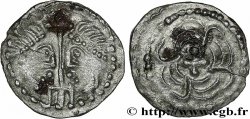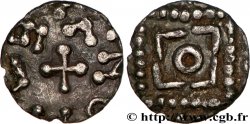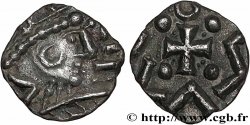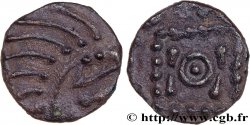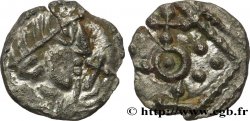bmv_330032 - ENGLAND - ANGLO-SAXONS Sceat à l’oiseau, revers aux annelets, Série E, variété L
Not available.
Item sold on our e-shop (2017)
Price : 250.00 €
Item sold on our e-shop (2017)
Price : 250.00 €
Type : Sceat à l’oiseau, revers aux annelets, Série E, variété L
Date: c. 710-760
Mint name / Town : Dorestad ou Quentovic
Metal : silver
Diameter : 12 mm
Orientation dies : 2 h.
Weight : 0,96 g.
Rarity : R2
Coments on the condition:
Magnifique monnaie sur un flan large et un peu ovale. Oiseau presque complet et revers particulièrement bien venu. Patine grise et irisée
Catalogue references :
Obverse
Obverse legend : ANÉPIGRAPHE.
Obverse description : Oiseau stylisé à droite, une croisette en guise de tête et un annelet pointé sous le bec ; grènetis (?) autour.
Reverse
Reverse legend : ANÉPIGRAPHE.
Reverse description : Annelet pointé entouré de quatre petits annelets pointés posés aux quatre coins, trois globules posés en triangle en cantonnement ; l’ensemble dans un carré perlé ; une croisette bouletée à l’exergue.
Commentary
Les sceattas à l’oiseau semblent plus rares que ceux dits “au porc-épic”. Le prototype de ces monnaies a parfois été présenté comme étant certains bronzes à l’aigle des Carnutes (cf. Mélanges J.-B. Colbert de Beaulieu, “Homotypies anachroniques”, M. Dhénin, p. 311). Le droit de ces mêmes bronzes pourrait d’ailleurs être le prototype de la tête des monnaies “au porc-épic”.
Ce type exacte est aussi connu avec un oiseau à gauche (Abramson E330).
Ce type exacte est aussi connu avec un oiseau à gauche (Abramson E330).







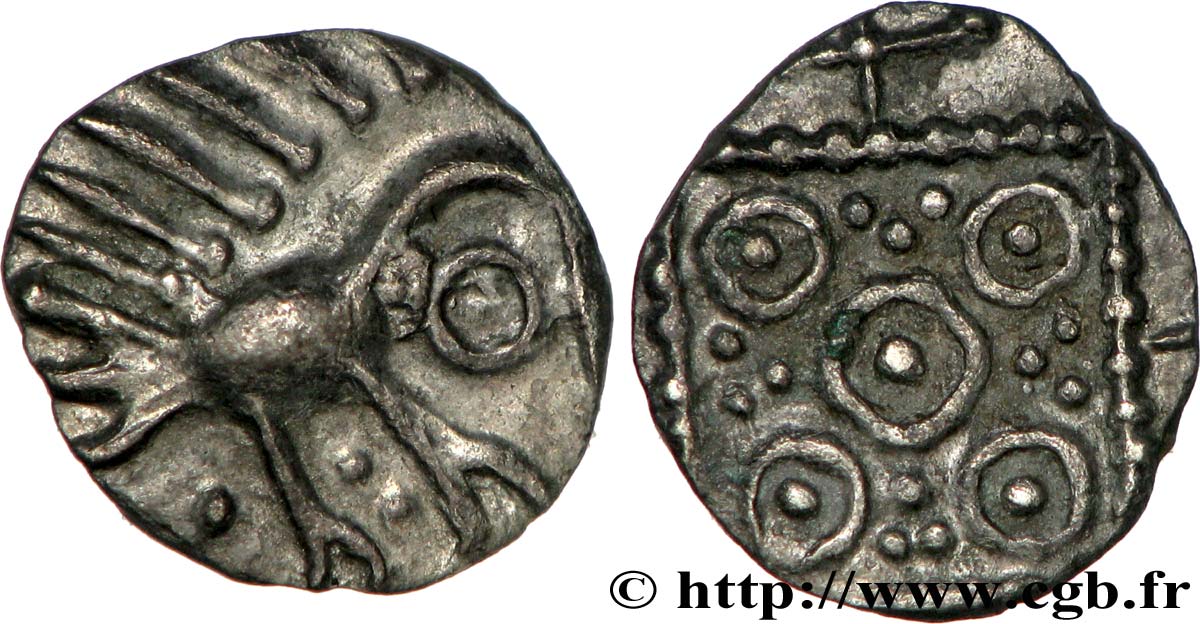
 Report a mistake
Report a mistake Print the page
Print the page Share my selection
Share my selection Ask a question
Ask a question Consign / sell
Consign / sell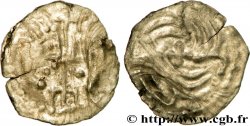
 Full data
Full data